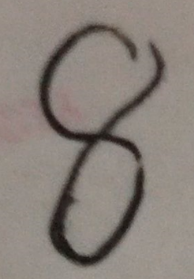Mnist手寫數字識別 Tensorflow
阿新 • • 發佈:2020-07-20
# Mnist手寫數字識別 Tensorflow
## 任務目標
* 瞭解mnist資料集
* 搭建和測試模型
***
## 編輯環境
作業系統:Win10
python版本:3.6
整合開發環境:pycharm
tensorflow版本:1.*
***
## 程式流程圖

***
## 瞭解mnist資料集
mnist資料集:[mnist資料集下載地址](http://yann.lecun.com/exdb/mnist/)
MNIST 資料集來自美國國家標準與技術研究所, National Institute of Standards and Technology (NIST). 訓練集 (training set) 由來自 250 個不同人手寫的數字構成, 其中 50% 是高中學生, 50% 來自人口普查局 (the Census Bureau) 的工作人員. 測試集(test set) 也是同樣比例的手寫數字資料.
圖片是以位元組的形式進行儲存, 我們需要把它們讀取到 NumPy array 中, 以便訓練和測試演算法。
**讀取mnist資料集**
```
mnist = input_data.read_data_sets("mnist_data", one_hot=True)
```
***
## 模型結構
### 輸入層
```
with tf.variable_scope("data"):
x = tf.placeholder(tf.float32,shape=[None,784],name='x_pred') # 784=28*28*1 寬長為28,單通道圖片
y_true = tf.placeholder(tf.int32,shape=[None,10]) # 10個類別
```
### 第一層卷積
現在我們可以開始實現第一層了。它由一個卷積接一個max pooling完成。卷積在每個5x5的patch中算出32個特徵。卷積的權重張量形狀是[5, 5, 1, 32],前兩個維度是patch的大小,接著是輸入的通道數目,最後是輸出的通道數目。 而對於每一個輸出通道都有一個對應的偏置量。
為了用這一層,我們把x變成一個4d向量,其第2、第3維對應圖片的寬、高,最後一維代表圖片的顏色通道數(因為是灰度圖所以這裡的通道數為1,如果是rgb彩色圖,則為3)。
我們把x_image和權值向量進行卷積,加上偏置項,然後應用ReLU啟用函式,最後進行max pooling。
```
with tf.variable_scope("conv1"):
w_conv1 = tf.Variable(tf.random_normal([5,5,1,32])) # 5*5的卷積核 1個通道的輸入影象 32個不同的卷積核,得到32個特徵圖
b_conv1 = tf.Variable(tf.constant(0.0,shape=[32]))
x_reshape = tf.reshape(x,[-1,28,28,1]) # n張 28*28 的單通道圖片
conv1 = tf.nn.relu(tf.nn.conv2d(x_reshape,w_conv1,strides=[1,1,1,1],padding="SAME")+b_conv1) #strides為過濾器步長 padding='SAME' 邊緣自動補充
pool1 = tf.nn.max_pool(conv1,ksize=[1,2,2,1],strides=[1,2,2,1],padding="SAME") # ksize為池化層過濾器的尺度,strides為過濾器步長 padding="SAME" 考慮邊界,如果不夠用 用0填充
```
### 第二層卷積
為了構建一個更深的網路,我們會把幾個類似的層堆疊起來。第二層中,每個5x5的patch會得到64個特徵
```
with tf.variable_scope("conv2"):
w_conv2 = tf.Variable(tf.random_normal([5,5,32,64]))
b_conv2 = tf.Variable(tf.constant(0.0,shape=[64]))
conv2 = tf.nn.relu(tf.nn.conv2d(pool1,w_conv2,strides=[1,1,1,1],padding="SAME")+b_conv2)
pool2 = tf.nn.max_pool(conv2,ksize=[1,2,2,1],strides=[1,2,2,1],padding="SAME")
```
### 密集連線層
現在,圖片尺寸減小到7x7,我們加入一個有1024個神經元的全連線層,用於處理整個圖片。我們把池化層輸出的張量reshape成一些向量,乘上權重矩陣,加上偏置,然後對其使用ReLU。
為了減少過擬合,我們在輸出層之前加入dropout。我們用一個placeholder來代表一個神經元的輸出在dropout中保持不變的概率。這樣我們可以在訓練過程中啟用dropout,在測試過程中關閉dropout。 TensorFlow的tf.nn.dropout操作除了可以遮蔽神經元的輸出外,還會自動處理神經元輸出值的scale。所以用dropout的時候可以不用考慮scale。
```
with tf.variable_scope("fc1"):
w_fc1 = tf.Variable(tf.random_normal([7*7*64,1024])) # 經過兩次卷積和池化 28 * 28/(2+2) = 7 * 7
b_fc1 = tf.Variable(tf.constant(0.0,shape=[1024]))
h_pool2_flat = tf.reshape(pool2, [-1, 7 * 7 * 64])
h_fc1 = tf.nn.relu(tf.matmul(h_pool2_flat, w_fc1) + b_fc1)
# 在輸出層之前加入dropout以減少過擬合
keep_prob = tf.placeholder("float32",name="keep_prob")
h_fc1_drop = tf.nn.dropout(h_fc1, keep_prob)
```
### 輸出層
&emsp' 最後,我們新增一個softmax層,就像前面的單層softmax regression一樣。
```
with tf.variable_scope("fc2"):
w_fc2 = tf.Variable(tf.random_normal([1024,10])) # 經過兩次卷積和池化 28 * 28/(2+2) = 7 * 7
b_fc2 = tf.Variable(tf.constant(0.0,shape=[10]))
y_predict = tf.matmul(h_fc1_drop,w_fc2)+b_fc2
tf.add_to_collection('pred_network', y_predict) # 用於載入模型獲取要預測的網路結構
```
***
## 訓練和評估模型
為了進行訓練和評估,我們使用與之前簡單的單層SoftMax神經網路模型幾乎相同的一套程式碼,只是我們會用更加複雜的ADAM優化器來做梯度最速下降,在feed_dict中加入額外的引數keep_prob來控制dropout比例。然後每100次迭代輸出一次日誌。
```
with tf.variable_scope("loss"):
loss = tf.reduce_mean(tf.nn.softmax_cross_entropy_with_logits(labels=y_true,logits=y_predict))
with tf.variable_scope("optimizer"):
# 使用反向傳播,利用優化器使損失函式最小化
train_op = tf.train.AdamOptimizer(0.001).minimize(loss)
with tf.variable_scope("acc"):
# 檢測我們的預測是否真實標籤匹配(索引位置一樣表示匹配)
# tf.argmax(y_conv,dimension), 返回最大數值的下標 通常和tf.equal()一起使用,計算模型準確度
# dimension=0 按列找 dimension=1 按行找
equal_list = tf.equal(tf.arg_max(y_true,1),tf.arg_max(y_predict,1))
# 統計測試準確率, 將correct_prediction的布林值轉換為浮點數來代表對、錯,並取平均值。
accuracy = tf.reduce_mean(tf.cast(equal_list,tf.float32))
# tensorboard
# tf.summary.histogram用來顯示直方圖資訊
# tf.summary.scalar用來顯示標量資訊
# Summary:所有需要在TensorBoard上展示的統計結果
tf.summary.histogram("weight",w_fc2)
tf.summary.histogram("bias",b_fc2)
tf.summary.scalar("loss",loss)
tf.summary.scalar("acc",accuracy)
merged = tf.summary.merge_all()
saver = tf.train.Saver()
with tf.Session() as sess:
sess.run(tf.global_variables_initializer())
filewriter = tf.summary.FileWriter("tfboard",graph=sess.graph)
if is_train: # 訓練
for i in range(20001):
x_train, y_train = mnist.train.next_batch(50)
if i%100==0:
# 評估模型準確度,此階段不使用Dropout
print("第%d訓練,準確率為%f" % (i + 1, sess.run(accuracy, feed_dict={x: x_train, y_true: y_train, keep_prob: 1.0})))
# # 訓練模型,此階段使用50%的Dropout
sess.run(train_op,feed_dict={x:x_train,y_true:y_train,keep_prob: 0.5})
summary = sess.run(merged,feed_dict={x:x_train,y_true:y_train, keep_prob: 1})
filewriter.add_summary(summary,i)
saver.save(sess,savemodel)
else: # 測試集預測
count = 0.0
epochs = 300
saver.restore(sess, savemodel)
for i in range(epochs):
x_test, y_test = mnist.train.next_batch(1)
print("第%d張圖片,真實值為:%d預測值為:%d" % (i + 1,
tf.argmax(sess.run(y_true, feed_dict={x: x_test, y_true: y_test,keep_prob: 1.0}),
1).eval(),
tf.argmax(
sess.run(y_predict, feed_dict={x: x_test, y_true: y_test,keep_prob: 1.0}),
1).eval()
))
if (tf.argmax(sess.run(y_true, feed_dict={x: x_test, y_true: y_test,keep_prob: 1.0}), 1).eval() == tf.argmax(
sess.run(y_predict, feed_dict={x: x_test, y_true: y_test,keep_prob: 1.0}), 1).eval()):
count = count + 1
print("正確率為 %.2f " % float(count * 100 / epochs) + "%")
```
**評估結果**

***
## 傳入手寫圖片,利用模型預測
首先利用opencv包將圖片轉為單通道(灰度圖),調整影象尺寸28*28,並且二值化影象,通過處理最後得到一個(0~1)扁平的圖片畫素值(一個二維陣列)。
**手寫數字圖片**

**處理手寫數字圖片**
```
def dealFigureImg(imgPath):
img = cv2.imread(imgPath) # 手寫數字影象所在位置
img = cv2.cvtColor(img, cv2.COLOR_BGR2GRAY) # 轉換影象為單通道(灰度圖)
resize_img = cv2.resize(img, (28, 28)) # 調整影象尺寸為28*28
ret, thresh_img = cv2.threshold(resize_img, 127, 255, cv2.THRESH_BINARY) # 二值化
cv2.imwrite("image/temp.jpg",thresh_img)
im = Image.open('image/temp.jpg')
data = list(im.getdata()) # 得到一個扁平的 圖片畫素
result = [(255 - x) * 1.0 / 255.0 for x in data] # 畫素值範圍(0-255),轉換為(0-1) ->符合模型訓練時傳入資料的值
result = np.expand_dims(result, 0) # 擴充套件維度 ->符合模型訓練時傳入資料的維度
os.remove('image/temp.jpg')
return result
```
***
**載入模型進行預測**
```
def predictFigureImg(imgPath):
result = dealFigureImg(imgPath)
with tf.Session() as sess:
new_saver = tf.train.import_meta_graph("model/mnist_model.meta")
new_saver.restore(sess, "model/mnist_model")
graph = tf.get_default_graph()
x = graph.get_operation_by_name('data/x_pred').outputs[0]
keep_prob = graph.get_operation_by_name('fc1/keep_prob').outputs[0]
y = tf.get_collection("pred_network")[0]
predict = np.argmax(sess.run(y, feed_dict={x: result,keep_prob:1.0}))
print("result:",predict)
```
**預測結果**

***
## 完整程式碼
```
import tensorflow as tf
import cv2
import os
import numpy as np
from PIL import Image
from tensorflow.examples.tutorials.mnist import input_data
# 構造模型
def getMnistModel(savemodel,is_train):
"""
:param savemodel: 模型儲存路徑
:param is_train: True為訓練,False為測試模型
:return:None
"""
mnist = input_data.read_data_sets("mnist_data", one_hot=True)
with tf.variable_scope("data"):
x = tf.placeholder(tf.float32,shape=[None,784],name='x_pred') # 784=28*28*1 寬長為28,單通道圖片
y_true = tf.placeholder(tf.int32,shape=[None,10]) # 10個類別
with tf.variable_scope("conv1"):
w_conv1 = tf.Variable(tf.random_normal([5,5,1,32])) # 5*5的卷積核 1個通道的輸入影象 32個不同的卷積核,得到32個特徵圖
b_conv1 = tf.Variable(tf.constant(0.0,shape=[32]))
x_reshape = tf.reshape(x,[-1,28,28,1]) # n張 28*28 的單通道圖片
conv1 = tf.nn.relu(tf.nn.conv2d(x_reshape,w_conv1,strides=[1,1,1,1],padding="SAME")+b_conv1) #strides為過濾器步長 padding='SAME' 邊緣自動補充
pool1 = tf.nn.max_pool(conv1,ksize=[1,2,2,1],strides=[1,2,2,1],padding="SAME") # ksize為池化層過濾器的尺度,strides為過濾器步長 padding="SAME" 考慮邊界,如果不夠用 用0填充
with tf.variable_scope("conv2"):
w_conv2 = tf.Variable(tf.random_normal([5,5,32,64]))
b_conv2 = tf.Variable(tf.constant(0.0,shape=[64]))
conv2 = tf.nn.relu(tf.nn.conv2d(pool1,w_conv2,strides=[1,1,1,1],padding="SAME")+b_conv2)
pool2 = tf.nn.max_pool(conv2,ksize=[1,2,2,1],strides=[1,2,2,1],padding="SAME")
with tf.variable_scope("fc1"):
w_fc1 = tf.Variable(tf.random_normal([7*7*64,1024])) # 經過兩次卷積和池化 28 * 28/(2+2) = 7 * 7
b_fc1 = tf.Variable(tf.constant(0.0,shape=[1024]))
h_pool2_flat = tf.reshape(pool2, [-1, 7 * 7 * 64])
h_fc1 = tf.nn.relu(tf.matmul(h_pool2_flat, w_fc1) + b_fc1)
# 在輸出層之前加入dropout以減少過擬合
keep_prob = tf.placeholder("float32",name="keep_prob")
h_fc1_drop = tf.nn.dropout(h_fc1, keep_prob)
with tf.variable_scope("fc2"):
w_fc2 = tf.Variable(tf.random_normal([1024,10])) # 經過兩次卷積和池化 28 * 28/(2+2) = 7 * 7
b_fc2 = tf.Variable(tf.constant(0.0,shape=[10]))
y_predict = tf.matmul(h_fc1_drop,w_fc2)+b_fc2
tf.add_to_collection('pred_network', y_predict) # 用於載入模型獲取要預測的網路結構
with tf.variable_scope("loss"):
loss = tf.reduce_mean(tf.nn.softmax_cross_entropy_with_logits(labels=y_true,logits=y_predict))
with tf.variable_scope("optimizer"):
# 使用反向傳播,利用優化器使損失函式最小化
train_op = tf.train.AdamOptimizer(0.001).minimize(loss)
with tf.variable_scope("acc"):
# 檢測我們的預測是否真實標籤匹配(索引位置一樣表示匹配)
# tf.argmax(y_conv,dimension), 返回最大數值的下標 通常和tf.equal()一起使用,計算模型準確度
# dimension=0 按列找 dimension=1 按行找
equal_list = tf.equal(tf.arg_max(y_true,1),tf.arg_max(y_predict,1))
# 統計測試準確率, 將correct_prediction的布林值轉換為浮點數來代表對、錯,並取平均值。
accuracy = tf.reduce_mean(tf.cast(equal_list,tf.float32))
# tensorboard
# tf.summary.histogram用來顯示直方圖資訊
# tf.summary.scalar用來顯示標量資訊
# Summary:所有需要在TensorBoard上展示的統計結果
tf.summary.histogram("weight",w_fc2)
tf.summary.histogram("bias",b_fc2)
tf.summary.scalar("loss",loss)
tf.summary.scalar("acc",accuracy)
merged = tf.summary.merge_all()
saver = tf.train.Saver()
with tf.Session() as sess:
sess.run(tf.global_variables_initializer())
filewriter = tf.summary.FileWriter("tfboard",graph=sess.graph)
if is_train: # 訓練
for i in range(20001):
x_train, y_train = mnist.train.next_batch(50)
if i%100==0:
# 評估模型準確度,此階段不使用Dropout
print("第%d訓練,準確率為%f" % (i + 1, sess.run(accuracy, feed_dict={x: x_train, y_true: y_train, keep_prob: 1.0})))
# # 訓練模型,此階段使用50%的Dropout
sess.run(train_op,feed_dict={x:x_train,y_true:y_train,keep_prob: 0.5})
summary = sess.run(merged,feed_dict={x:x_train,y_true:y_train, keep_prob: 1})
filewriter.add_summary(summary,i)
saver.save(sess,savemodel)
else: # 測試集預測
count = 0.0
epochs = 300
saver.restore(sess, savemodel)
for i in range(epochs):
x_test, y_test = mnist.train.next_batch(1)
print("第%d張圖片,真實值為:%d預測值為:%d" % (i + 1,
tf.argmax(sess.run(y_true, feed_dict={x: x_test, y_true: y_test,keep_prob: 1.0}),
1).eval(),
tf.argmax(
sess.run(y_predict, feed_dict={x: x_test, y_true: y_test,keep_prob: 1.0}),
1).eval()
))
if (tf.argmax(sess.run(y_true, feed_dict={x: x_test, y_true: y_test,keep_prob: 1.0}), 1).eval() == tf.argmax(
sess.run(y_predict, feed_dict={x: x_test, y_true: y_test,keep_prob: 1.0}), 1).eval()):
count = count + 1
print("正確率為 %.2f " % float(count * 100 / epochs) + "%")
# 手寫數字影象預測
def dealFigureImg(imgPath):
img = cv2.imread(imgPath) # 手寫數字影象所在位置
img = cv2.cvtColor(img, cv2.COLOR_BGR2GRAY) # 轉換影象為單通道(灰度圖)
resize_img = cv2.resize(img, (28, 28)) # 調整影象尺寸為28*28
ret, thresh_img = cv2.threshold(resize_img, 127, 255, cv2.THRESH_BINARY) # 二值化
cv2.imwrite("image/temp.jpg",thresh_img)
im = Image.open('image/temp.jpg')
data = list(im.getdata()) # 得到一個扁平的 圖片畫素
result = [(255 - x) * 1.0 / 255.0 for x in data] # 畫素值範圍(0-255),轉換為(0-1) ->符合模型訓練時傳入資料的值
result = np.expand_dims(result, 0) # 擴充套件維度 ->符合模型訓練時傳入資料的維度
os.remove('image/temp.jpg')
return result
def predictFigureImg(imgPath):
result = dealFigureImg(imgPath)
with tf.Session() as sess:
new_saver = tf.train.import_meta_graph("model/mnist_model.meta")
new_saver.restore(sess, "model/mnist_model")
graph = tf.get_default_graph()
x = graph.get_operation_by_name('data/x_pred').outputs[0]
keep_prob = graph.get_operation_by_name('fc1/keep_prob').outputs[0]
y = tf.get_collection("pred_network")[0]
predict = np.argmax(sess.run(y, feed_dict={x: result,keep_prob:1.0}))
print("result:",predict)
if __name__ == '__main__':
# 訓練和預測
modelPath = "model/mnist_model"
getMnistModel(modelPath,True) # True 訓練 False 預測
# 圖片傳入模型 進行預測
# imgPath = "image/8.jpg"
# predictFigureImg(imgPath)
```
tensorflow官方文件 mnist進階:[https://www.freesion.com/article/8867776254/](https://www.freesion.com/article/88677
